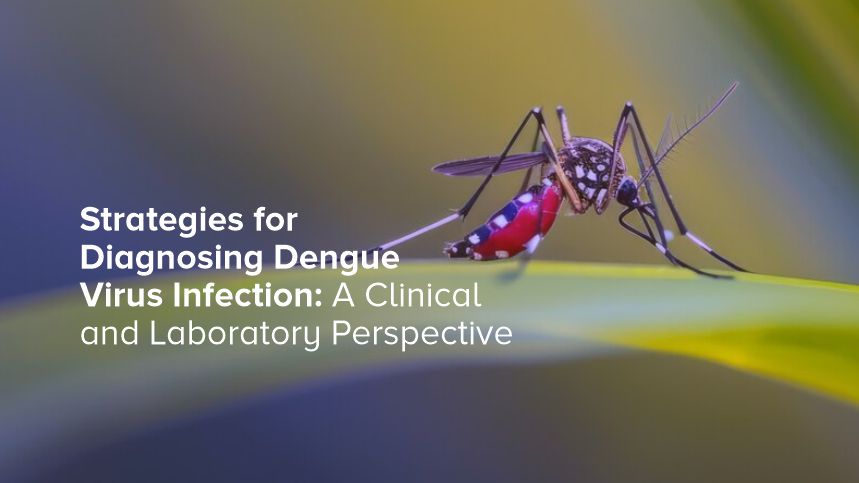


Condition
- Others
- Others
- Others
- Others
- Others
- Others
- Others
- Others
- Others
- Others
- Others
- Others
- Others
- Others
- Others
- Others
- Others
- Others
- Others
- Others
- Others
- Others
- Others
- Others
- Others
- Others
- Others
- Others
- Others
- Others
- Others
- Others
- Others
- Others
- Others
- Others
- Others
- Others
- Others
- Others
- Others
- Others
- Others
- Others
- Others
- Others
- Others
- Others
- Others
- Others
- Others
- Others
- Others
- Others
- Others
- Others
- Others
- Others
- Others
- Others
- Others
- Others
- Others
- Others
- Others
- Others
- Top tests
- Top tests
- Top tests
- Top tests
- Top tests
- Top tests
- Top tests
- Top tests
- Top tests
- Preventive Health Checkup
- Top tests
- Top tests
- Top tests
- Top tests
- Blood Banking & Transfusion
- Lifestyle Packages
- Blood Banking & Transfusion
- Blood Banking & Transfusion
- Top tests
- Top tests
- Lifestyle Packages
- Diabetes
- Blood Banking & Transfusion
- Blood Banking & Transfusion
- Blood Banking & Transfusion
- Blood Banking & Transfusion
- Blood Banking & Transfusion
- Others
- Others
- Others
- Others
- Blood Banking & Transfusion
- Blood Banking & Transfusion
- Blood Banking & Transfusion
- Blood Banking & Transfusion
- Vitamin Deficiency
- Vitamin Deficiency
- Vitamin Deficiency
- Vitamin Deficiency
- Vitamin Deficiency
- Blood Banking & Transfusion
- Blood Banking & Transfusion
- Blood Banking & Transfusion
- Blood Banking & Transfusion
- Diabetes
- Diabetes
- Heart Disease & Hypertension
- Preventive Health Checkup
- Diabetes
- Preventive Health Checkup
- Preventive Health Checkup
- Diabetes
- Diabetes
- Heart Disease & Hypertension
- Top tests
- Heart Disease & Hypertension
- Diabetes
- Top tests
- Diabetes
- Heart Disease & Hypertension
- Lifestyle Packages
- Heart Disease & Hypertension
- Lifestyle Packages
- Heart Disease & Hypertension
- Heart Disease & Hypertension
- Lifestyle Packages
- Preventive Health Checkup
- Preventive Health Checkup
- Top tests
- Preventive Health Checkup
- Heart Disease & Hypertension
- Heart Disease & Hypertension
- Heart Disease & Hypertension
- Top tests
- Top tests
- Lifestyle Packages
- Heart Disease & Hypertension
- Heart Disease & Hypertension
- Top tests
- Heart Disease & Hypertension
- Preventive Health Checkup
- Diabetes
- Lifestyle Packages
- Heart Disease & Hypertension
- Top tests
- Heart Disease & Hypertension
- Heart Disease & Hypertension
- Diabetes
- Lifestyle Packages
- Preventive Health Checkup
- Diabetes
- Top tests
- Diabetes
- Allergy
- Heart Disease & Hypertension
- Diabetes
- Heart Disease & Hypertension
- Diabetes
- Lifestyle Packages
- Lifestyle Packages
- Top tests
- Preventive Health Checkup
- Lifestyle Packages
- Preventive Health Checkup
- Preventive Health Checkup
- Diabetes
- Top tests
- Heart Disease & Hypertension
- Preventive Health Checkup
- Top tests
- Heart Disease & Hypertension
- Lifestyle Packages
- Lifestyle Packages
- Diabetes
- Preventive Health Checkup
- Top tests
- Diabetes
- Top tests
- Preventive Health Checkup
- Preventive Health Checkup
- Preventive Health Checkup
- Diabetes
- Lifestyle Packages
- Lifestyle Packages
- Heart Disease & Hypertension
- Lifestyle Packages
- Heart Disease & Hypertension
- Lifestyle Packages
- Preventive Health Checkup
- Preventive Health Checkup
- Preventive Health Checkup
- Lifestyle Packages
- Top tests
- Lifestyle Packages
- Top tests
- Lifestyle Packages
- Top tests
- Diabetes
- Diabetes
- Others
- Blood Disorders
- Top tests
- Others
- Others
- Others
- Fever
- Fever
- Blood Disorders
- Blood Disorders
- Preventive Health Checkup
- Preventive Health Checkup
- Profile
- Kidney Disease
- Kidney Disease
- Diabetes
- Diabetes
- Heart Disease & Hypertension
- Preventive Health Checkup
- Lifestyle Packages
- Thyroid Disorder
- Diabetes
- Diabetes
- Diabetes
- Diabetes
- Diabetes
- Diabetes
- Diabetes
- Top tests
- Allergy
- Top tests
- Top tests
- Top tests
- Top tests
- Diabetes
- Top tests
- Diabetes
- Top tests
- Top tests
- Top tests
- Liver Disease
- Diabetes
- Top tests
- Vitamin Deficiency
- Top tests
- Top tests
- Liver Disease
- Top tests
- Top tests
- Top tests
- Anemia
- Anemia
- Anemia
- Diabetes
- Diabetes
- Anemia
- Top tests
- Top tests
- Top tests
- Preventive Health Checkup
- Thyroid Disorder
- Heart Disease & Hypertension
- Top tests
- Preventive Health Checkup
- Diabetes
- Heart Disease & Hypertension
- Top tests
- Fever
- Allergy
- Liver Disease
- Lifestyle Packages
- Heart Disease & Hypertension
- Top tests
- Arthritis
- Top tests
- Top tests
- Heart Disease & Hypertension
- Kidney Disease
- Preventive Health Checkup
- Allergy
- Top tests
- Lifestyle Packages
- Top tests
- Kidney Disease
- Top tests
- Lifestyle Packages
- Top tests
- Preventive Health Checkup
- Preventive Health Checkup
- Top tests
- Top tests
- Vitamin Deficiency
- Allergy
- Diabetes
- Top tests
- Top tests
- Top tests
- Top tests
- Heart Disease & Hypertension
- Allergy
- Top tests
- Preventive Health Checkup
- Top tests
- Top tests
- Infertility
- Top tests
- Lifestyle Packages
- Allergy
- Diabetes
- Heart Disease & Hypertension
- Lifestyle Packages
- Preventive Health Checkup
- Preventive Health Checkup
- Top tests
- Preventive Health Checkup
- Top tests
- Diabetes
- Top tests
- Infertility
- Top tests
- Thyroid Disorder
- Top tests
- Allergy
- Preventive Health Checkup
- Vitamin Deficiency
- Top tests
- Top tests
- Infertility
- Lifestyle Packages
- Diabetes
- Liver Disease
- Kidney Disease
- Vitamin Deficiency
- Top tests
- Heart Disease & Hypertension
- Heart Disease & Hypertension
- Top tests
- Heart Disease & Hypertension
- Heart Disease & Hypertension
- Heart Disease & Hypertension
- Infertility
- Heart Disease & Hypertension
- Vitamin Deficiency
- Vitamin Deficiency
- Arthritis
- Arthritis
- Top tests
- Top tests
- Lifestyle Packages
- Preventive Health Checkup
- Lifestyle Packages
- Preventive Health Checkup
- Vitamin Deficiency
- Top tests
- Lifestyle Packages
- Lifestyle Packages
- Preventive Health Checkup
- Top tests
- Preventive Health Checkup
- Top tests
- Heart Disease & Hypertension
- Infertility
- Top tests
- Top tests
- Preventive Health Checkup
- Lifestyle Packages
- Top tests
- PCOD
- Preventive Health Checkup
- Lifestyle Packages
- Preventive Health Checkup
- Top tests
- Fever
- PCOD
- Kidney Disease
- Top tests
- Top tests
- Preventive Health Checkup
- Preventive Health Checkup
- Liver Disease
- Thyroid Disorder
- Top tests
- Heart Disease & Hypertension
- PCOD
- Top tests
- Arthritis
- Preventive Health Checkup
- Kidney Disease
- Lifestyle Packages
- Top tests
- Allergy
- Top tests
- Top tests
- Diabetes
- Thyroid Disorder
- Preventive Health Checkup
- Top tests
- Lifestyle Packages
- Preventive Health Checkup
- Top tests
- Kidney Disease
- Liver Disease
- Infertility
- Top tests
- Anemia
- Top tests
- Top tests
- Top tests
- Preventive Health Checkup
- Bone Health
- Cancer
- Fatty Liver

Tests
Each year, countless individuals in tropical and subtropical regions experience an unsettling wave of symptoms that can be attributed to the dengue virus. This mosquito-borne menace has become a health concern, not just for those residing in these climates but also for travelers seeking sun-soaked breaks. Diagnosing dengue virus infection promptly and accurately is crucial to avoid complications, preserve health, and prevent outbreaks.
Understanding Dengue Virus Infection
The dengue virus is transmitted mainly by Aedes aegypti mosquitoes, thriving in urban areas where stagnant water accumulates. This virus has four serotypes, meaning it's possible for someone to contract the virus multiple times with varying serotype infections. Each serotype offers no cross-protective immunity, which means a person infected with one strain could be vulnerable to the others.
Patients with dengue often exhibit flu-like symptoms, including fever, rash, and body aches, making early diagnosis tricky. The real danger lies in severe cases, leading to dengue hemorrhagic fever or dengue shock syndrome, both of which can be life-threatening without timely intervention. Health professionals often focus on fever patterns and suggest blood tests to confirm infection.
The Importance of Early Diagnosis
Diagnosing dengue promptly is pivotal in ensuring that patients receive appropriate care before complications arise. Early diagnosis allows healthcare providers to monitor patients closely, administer supportive treatments, and advise on fluid intake and rest, crucial for recovery. Additionally, diagnosing and reporting dengue cases helps in understanding transmission patterns and planning preventive measures to reduce further spread.
Health authorities emphasize the importance of public awareness and education to foster prompt recognition of symptoms. They encourage individuals to seek medical attention quickly, especially in endemic areas, to prevent fatalities and reduce strain on healthcare systems. Community cooperation is essential, as early diagnosis not only protects the individual but benefits public health efforts.
Common Symptoms to Watch For
Recognizing the symptoms of dengue is the first step towards seeking timely medical attention. Typically, patients experience high fever accompanied by severe headaches, pain behind the eyes, muscle and joint pains, and skin rashes. These symptoms usually appear 4-10 days after the mosquito bite and can last for up to a week.
Sometimes, people may also experience mild bleeding from gums or nose and easy bruising. Health practitioners advise remaining vigilant for any new symptoms, particularly in areas known for dengue prevalence. Educating communities about these symptoms helps to encourage earlier medical consultations and preventative measures.
While some may experience mild symptoms, severe cases can escalate rapidly to more dangerous conditions. Highlighting and understanding the broad range of symptoms are crucial for individuals to make informed decisions about seeking medical care, which can potentially save lives.
Diagnostic Tests for Dengue
Medical professionals rely on a combination of clinical symptoms and laboratory tests to diagnose dengue accurately. Commonly, a blood test is performed to detect the presence of the virus or antibodies in the bloodstream. The NS1 antigen test is one of the primary tests used during the initial stages of infection, detecting virus presence before antibodies develop.
Meanwhile, antibody tests like the IgM and IgG are useful during later stages. The IgM test detects antibodies that form approximately a week after infection, while the IgG test is indicative of a past infection. Healthcare providers use these tests in tandem with medical history and symptoms to confirm an infection, guiding treatment and management strategies.
Recognizing Severe Dengue Complications
While many recover from dengue after experiencing mild to moderate symptoms, some cases may transition to severe dengue, marking a more dangerous phase. Warning signs include severe abdominal pain, persistent vomiting, rapid breathing, bleeding gums, and fatigue. These warrant immediate hospital treatment and close monitoring.
Severe dengue can lead to a critical drop in platelet counts, responsible for clotting, contributing to increased bleeding risk. It may also cause plasma leakage, leading to fluid accumulation, organ impairment, and in rare cases, severe dengue shock syndrome. Early intervention in these cases is crucial for preventing fatal outcomes.
Healthcare facilities are equipped to handle severe cases, emphasizing constant vigilance and supportive care. Educating communities about recognizing these symptoms can dramatically impact patient outcomes, fostering an environment where severe cases receive urgent attention.
Prevention Strategies for Dengue
Prevention remains a crucial component in combating dengue outbreaks, with a focus on controlling mosquito populations and minimizing breeding sites. Communities are encouraged to eliminate standing water, where Aedes mosquitoes breed most actively. Regular cleaning of household and garden areas to prevent water pooling is essential.
Personal protection is another key strategy, utilizing insect repellent, wearing protective clothing, and installing screens on windows to reduce exposure to mosquito bites. These preventive tactics are accessible to many and play a vital role in curbing the spread of dengue in high-risk areas.
Global Impact of Dengue Fever
Dengue fever is a growing health concern worldwide, impacting billions of people living in at-risk regions. The World Health Organization reports a significant increase in dengue cases in recent years, highlighting the urgent need for effective prevention and control measures. With climate change contributing to the spread of Aedes mosquitoes, the global impact is expected to rise.
International health organizations emphasize the importance of coordinated response strategies, particularly in resource-limited settings. They work on improving disease surveillance, vector control measures, and public awareness campaigns, aiming to reduce the burden of dengue on affected populations.
Communities worldwide can play an active role in reducing dengue transmission through collective efforts and adherence to prevention measures. Strengthening local and international partnerships is crucial in developing effective strategies to address this pressing public health challenge.
Research into vaccination continues, aiming to develop more effective solutions that can be widely used across varied populations. The potential for vaccines to curb dengue outbreaks is significant, potentially transforming the management of the disease on a global scale.
Lifestyle Tips for Dengue Recovery
Recovering from dengue involves a supportive care approach, focusing on symptom management and hydration. Patients are advised to rest extensively and maintain proper fluid intake to alleviate fever and prevent dehydration. Over-the-counter pain relief, such as acetaminophen, may be recommended to manage discomfort.
Vitamin-rich foods such as fruits and vegetables can aid recovery by boosting the immune system. Encouraging gradual physical activity as recovery progresses also helps in rebuilding strength and stamina. Following these lifestyle tips can help speed the recovery and contribute to the overall well-being of the individual.
Medical professionals emphasize the importance of regular follow-up appointments to monitor recovery progress and provide additional care if necessary. Balancing rest and nutrition is key to a smooth recovery process and regaining vitality post-dengue infection.
Conclusion
Diagnosing dengue virus infection is crucial in managing its impact and preventing severe cases. Timely diagnosis, vigilant symptom monitoring, and preventative strategies form the core of effective dengue control.
WANT TO BOOK HEALTH CHECKUP ?
Categories
Others
74
Top tests
100
Preventive Health Checkup
46
Blood Banking & Transfusion
16
Lifestyle Packages
35
Diabetes
40
Vitamin Deficiency
12
Heart Disease & Hypertension
37
Allergy
9
Blood Disorders
3
Fever
4
Profile
1
Kidney Disease
8
Thyroid Disorder
5
Liver Disease
6
Anemia
5
Arthritis
4
Infertility
6
PCOD
3
Bone Health
1
Cancer
1
Fatty Liver
1
Recent Blogs
Vitamin B1 Test: Why Thiamine Levels Matter for Your Health
Vitamin B1, also known as thiamine, is an essential nutrient that plays a critical role...
27-10-2025
Vitamin A Deficiency: Signs, Symptoms, and How to Prevent It
Vitamin A is an essential fat-soluble vitamin that plays a vital role in maintaining good...
27-10-2025
Fatty Acids Test: When Your Doctor Might Recommend It
Fatty acids play a crucial role in maintaining optimal health, yet many people remain unaware...
27-10-2025







